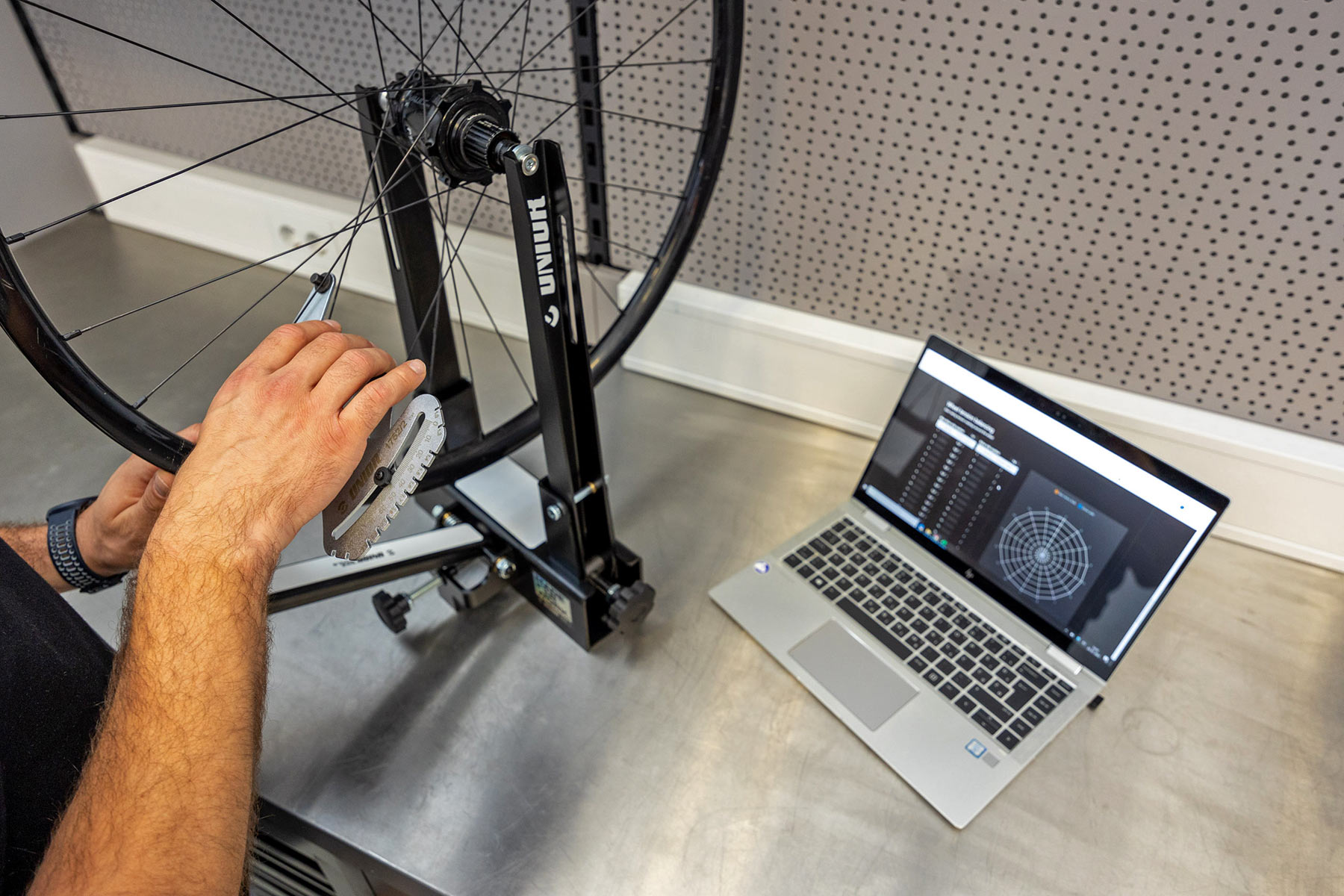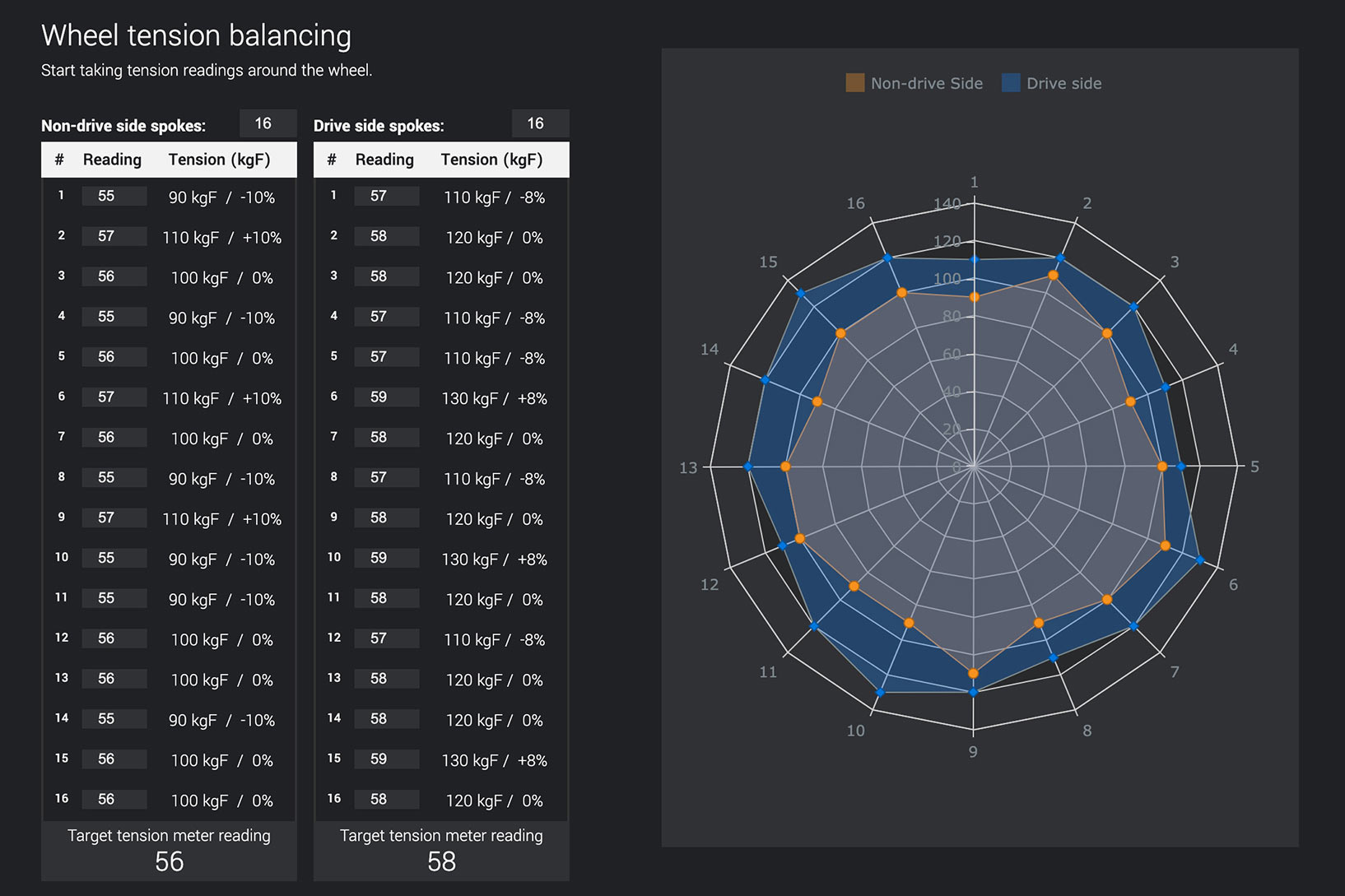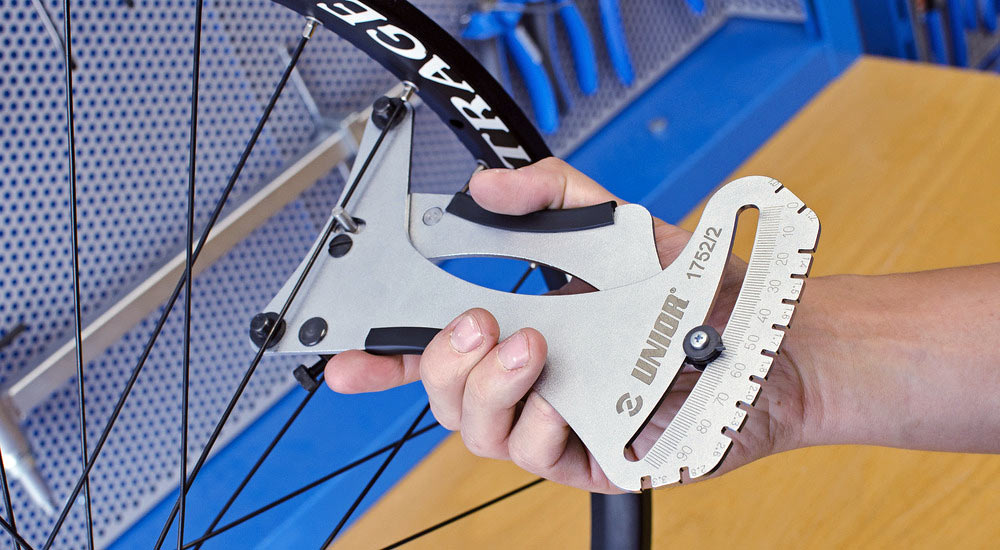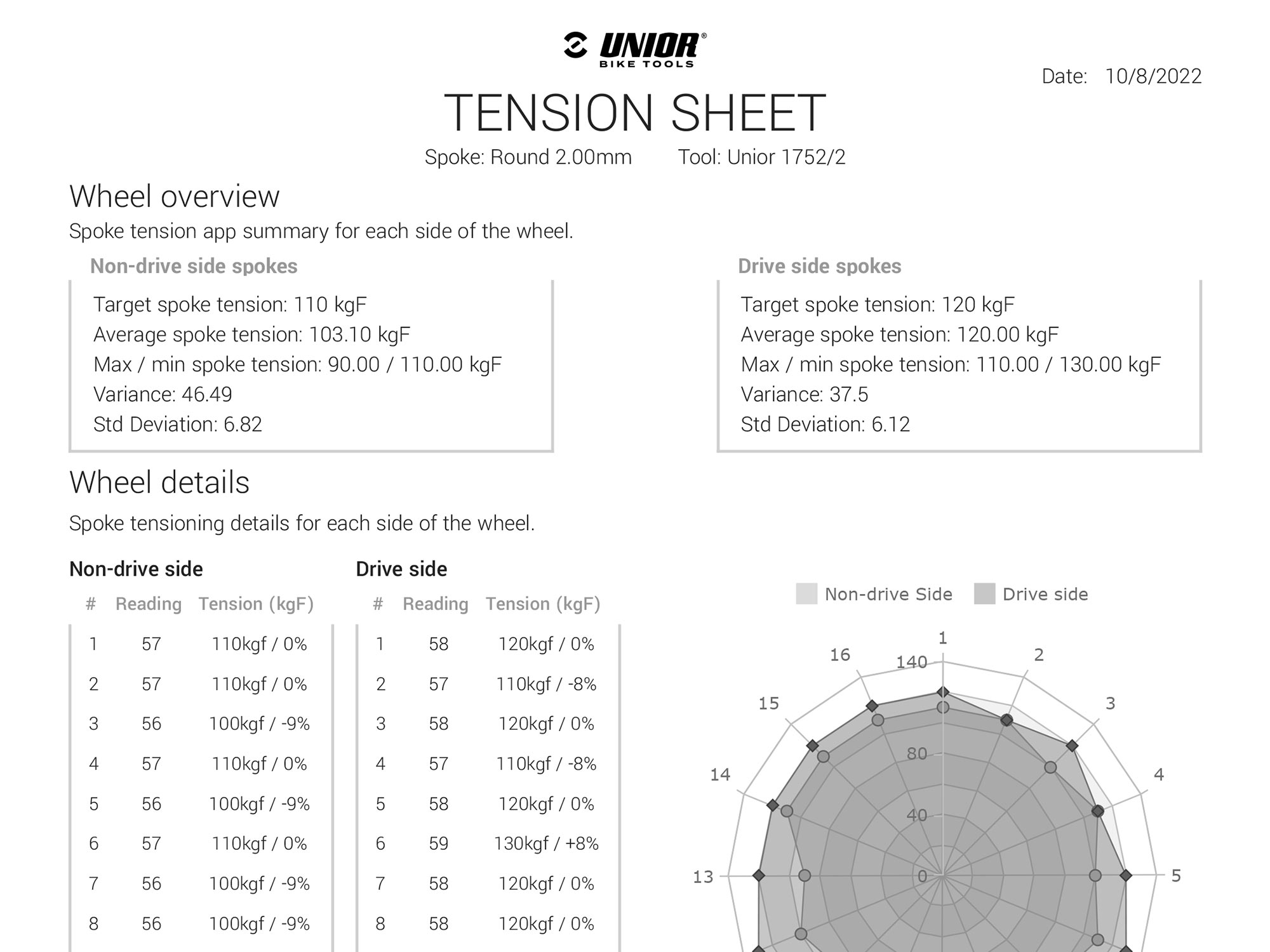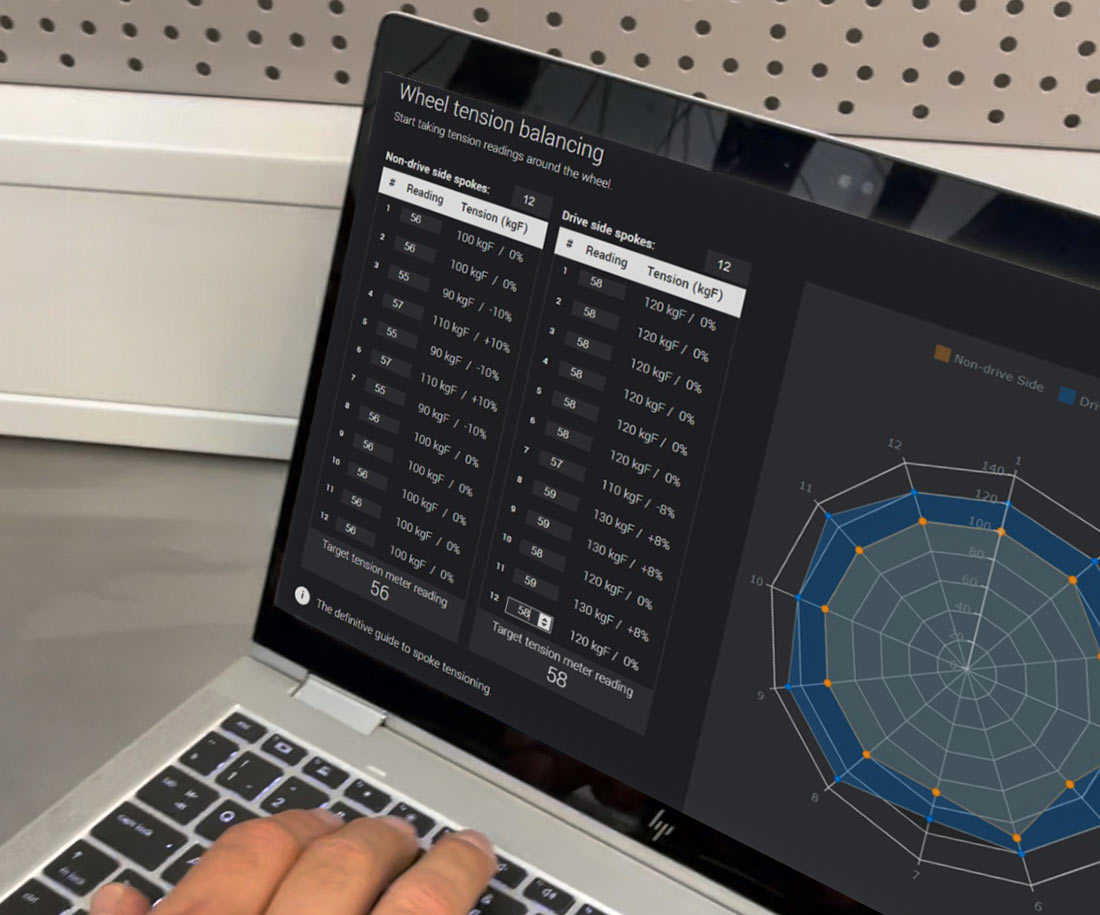One may think a great wheelbuilder only truly needs a spoke wrench and the master’s touch, but Unior’s new online Unior Spoke Tension App takes building perfect wheels to a new level. Working together with SpokeCalc, whose online tools will help you from the start by selecting the correct spokes, the Unior App helps dial in the perfect tension and creates a visual summary of each wheel built…
Unior Spoke Tension App helps build perfect wheels
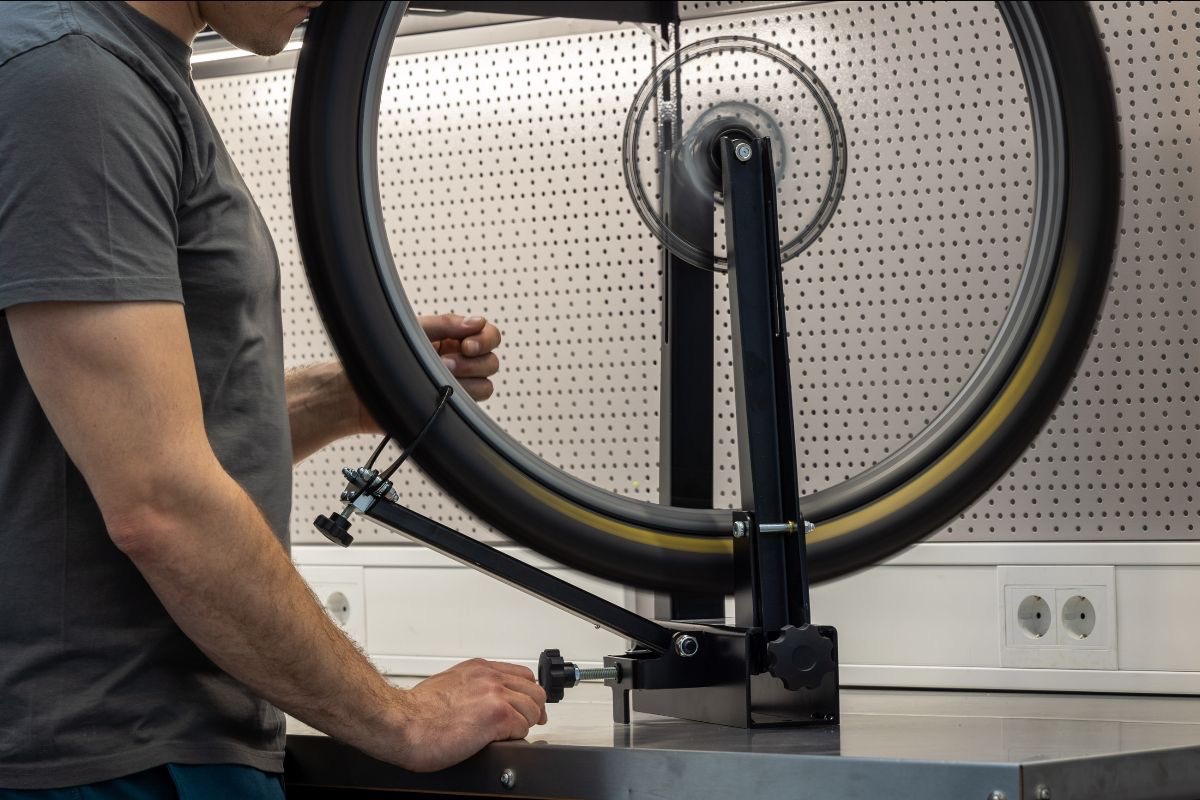
Wheel building is undeniably an art. But there is also a science to it, as well. A wheel builder needs the right tools – a good spoke wrench, a solid truing stand to start, and then a spoke tension meter to really build uniform and balanced tension into the new wheel. Now, Unior’s free online Spoke Tension App gives wheel builders an easy way to track & visualize tension as they build, and then export a tension report that can be passed on to the new wheel’s owner.
It’s a relatively straightforward tool, and something similar to what large-scale production wheel builders already use (like when we toured DT Swiss more than 5 years ago). In fact, it’s a slightly simplified version of the subscription service wheelbuilding tools created by SpokeCalc.
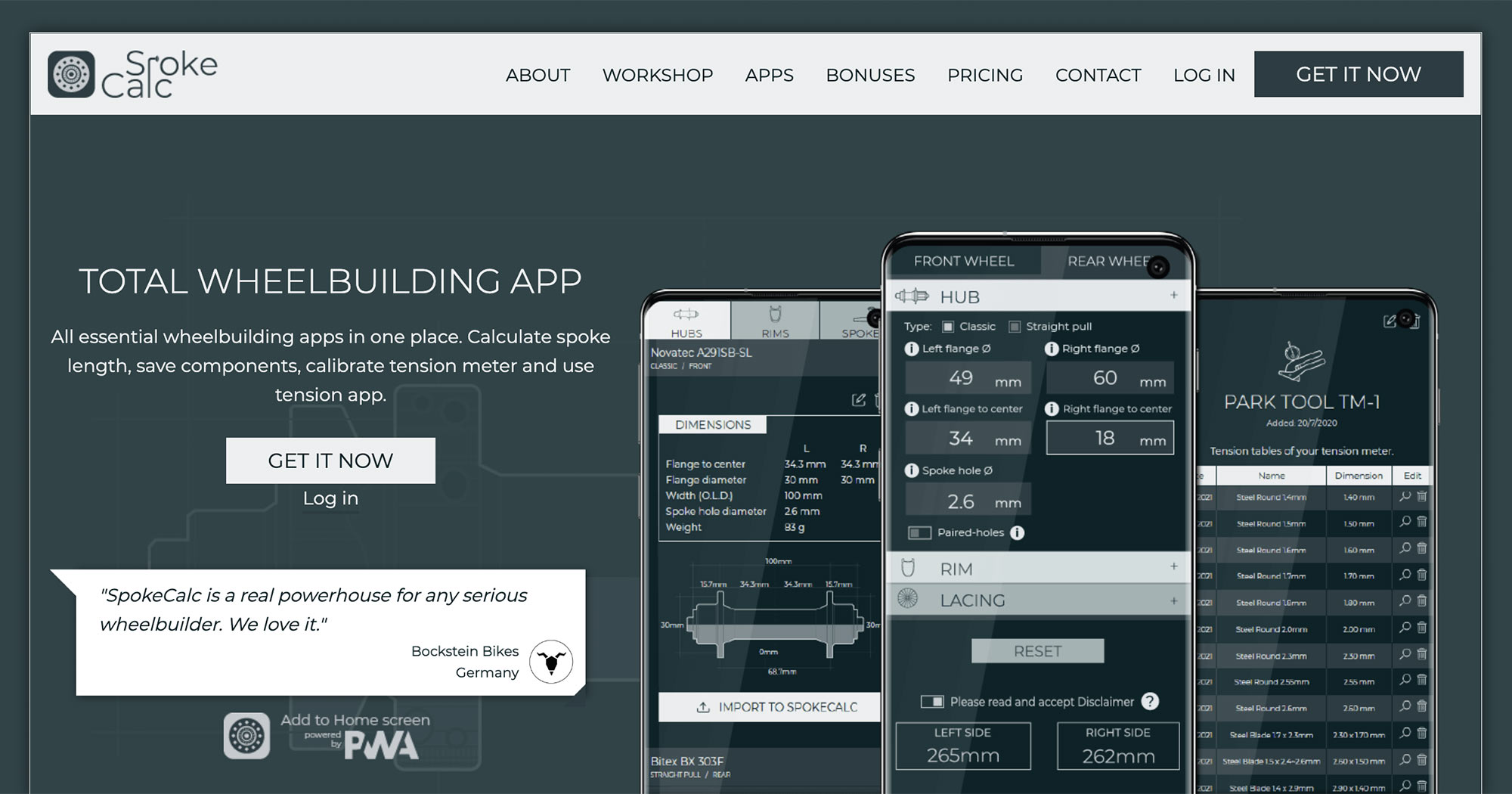
But working together with fellow Slovenian Aljaž Trenta of Spoke Calc, Unior’s free online app brings premium tension tracking into reach for anyone with a Unior Spoke Tension Meter 1752/2 – whether you are a professional custom wheel builder or an ambitious home mechanic.
The Unior free tool is easy to use. Just pick your spokes, target spoke tension (which Unior & SpokeCalc will also help you with), and then start entering your measurements as you tension the wheelbuild.
The Unior Spoke Tension App creates an easy-to-understand table & graph of the tension balance for each wheel, and it can be printed or saved when you are done for quality control and tracking.
Again, it’s free to use with the Unior tensiometer, and web-accessible from any device.
